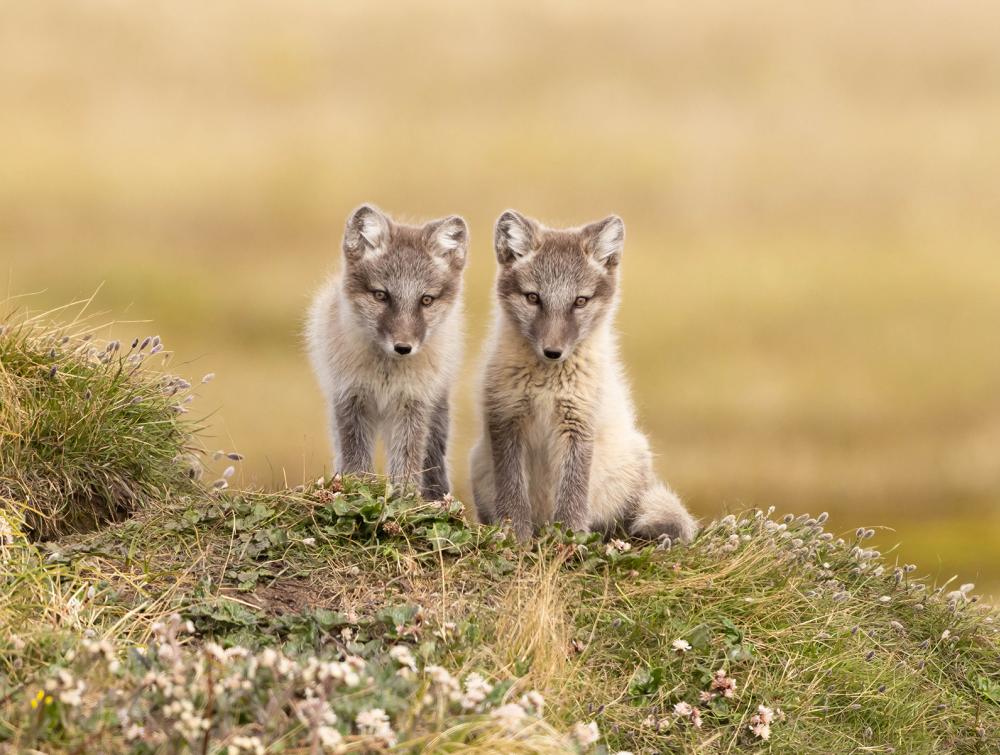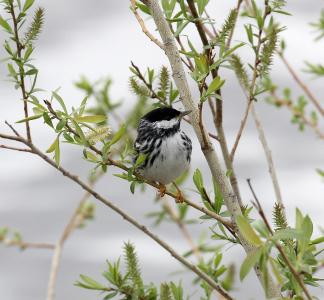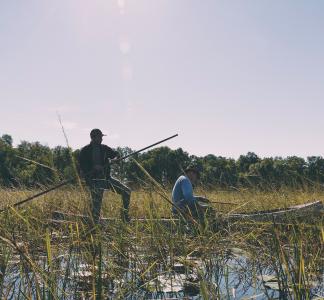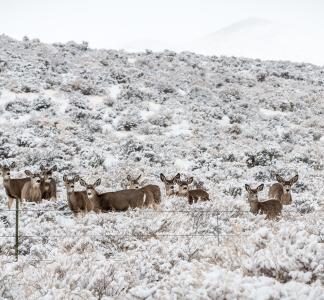What is “biodiversity”? 4 key questions

Arctic Fox
Lisa Hupp/USFWS
Development, climate change threaten life
By now, we’ve written some version of this sentence so many times it’s practically burned into our laptop screens: Biodiversity is higher in protected areas than unprotected areas. That’s why it’s so important to conserve a network of lands and waters while we still can, to combat nature loss and help people and wildlife alike adapt to the climate crisis.
But what does that mean, exactly? What IS biodiversity, and is it really something that can be “saved”?
With the recent U.N. biodiversity conference in the news, we tried to answer some of your questions about this oft-mentioned idea and what it has to do with conservation.
1. What is “biodiversity”?
This relatively new, buzz-worthy term is, on one hand, pretty simple. “Bio” equals “life,” and “diversity” equals, well, “diversity.” So “biodiversity” means the whole cornucopia/profusion/megillah of organisms on this quirky little planet.
But it goes a bit deeper than that. When scientists use the word, they generally mean the full variety of life at all levels, running from genes within an individual creature up to entire ecosystems and all the connections between them. It includes bacteria and other microbes, plus plenty of other things we might not readily think of as fellow Earthlings.
The term "biodiversity" is relatively new, but Indigenous cultures the world over have been putting the idea to use since time immemorial
The term “biological diversity” has been in occasional use for over 100 years but this contracted version didn’t become a regular feature of scientific discourse until the past few decades, as awareness climbed about the far-reaching effects of industrial development and other human activity on the environment.
An important postscript: while the scientific definition of the term "biodiversity" is a recent development, Indigenous cultures the world over have been putting the idea to to use since time immemorial. Numerous Indigenous peoples employ a complex, reciprocal understanding of the natural world in which humans are a key piece among many rather than a dominant force. More on that in a couple of minutes.
2. Does biodiversity really matter?
Many of us grew up with some version of the idea that plants and animals are interconnected and interdependent. Illustrations of this concept range from the "food chain,” adopted by zoologist Charles Elton from 9th century Iraqi scientist Al Jahiz, to The Lion King’s “Circle of Life.”
Guess what? It’s legit. Life’s diversity itself is vital to functioning ecosystems—and to the survival of human societies, too.
Many species are fading before we even have enough data to understand how they fit into the "fabric of life."
There is debate about how to evaluate the ways different species “matter” (and indeed, species diversity for its own sake isn’t always desirable; think of non-native species popping up in new areas). Scientists have barely scratched the surface when it comes to mapping out this vast, complex, buzzing network. Many species are fading from the scene before we even have enough data to understand their plight, let alone how they fit in. But in general, the notion of a “fabric of life” that intimately includes us—and that suffers from the loss of any of its constituent threads—is right on the money.
Think of how oysters filter pollution from water, making estuaries livable for various fish (which in turn end up feeding bigger fish, crabs, seabirds and people). Or how important food crops depend both on pollinators like bees and bats, and microbes that enable fertile soil. Removing any of these (sometimes easy-to-forget) pieces would have disastrous and far-reaching consequences.
3. What is threatening biodiversity?
Even if you haven’t thought much about the concept of biodiversity, there’s a good chance you’re aware of some of the ways it’s being threatened. Scientists say we’re now entering the sixth mass extinction in the planet’s history. Instead of an asteroid, this one is caused by human-caused factors like climate change, industrial-scale agriculture land-use, the spread of invasive species and pollution.
The sixth mass extinction is is caused by human-caused factors like climate change, industrial-scale agriculture land-use and pollution.
Almost every day, you can find some new story or data point that illustrates the magnitude of this threat. In recent weeks, a study showed increased extinction risk for many insect species; a report estimated wildlife population abundance has declined almost 70 percent since 1970; and new data showed that more than half of palm tree species may be threatened with extinction.
And who ends up being hurt by this loss of biodiversity? People—especially people who are aren’t wealthy.
4. Can we actually do anything to “save” biodiversity?
This is the question that’s on everyone’s mind lately. The year 2022 marks three decades since the creation of the United Nations’ Convention on Biodiversity. As we mentioned, the COP15 conference on biodiversity just concluded after days’ worth of discussion about how to arrest the ongoing crisis of biodiversity and nature loss.
First off, we have to confront climate change head-on. The continued warming of the planet has a multiplier effect that both directly threatens species and makes all the other threats worse. High temperatures are a major factor in whether a species declines, and some experts have said failing to meet strong emissions-reduction goals could lead to “more than a third or even half of all animal and plant species” going extinct.
So we need to draw down fossil fuels and ramp up renewable energy (while steering clear of sensitive habitat and cultural sites). Our public lands and waters, which currently host oil, gas and coal development that accounts for about one-quarter of U.S. climate emissions, are a great place to start this overhaul.
The COP15 conference included the official adoption of a goal to protect 30% of the Earth’s lands and waters by 2030
That brings us to the second point. The COP15 conference included the official adoption of a goal to protect 30 percent of the Earth’s lands and waters by 2030. This parallels a rising scientific consensus about what’s needed to stem nature loss resulting from the climate and extinction crises, also reflected in a conservation benchmark set by the Biden administration. Protecting more public lands and waters—in an interconnected network—will help conserve dwindling habitat, give wildlife clear pathways to migrate and adapt and protect biodiversity “hot spots” (places with lots of species found nowhere else, giving them outsized conservation value).
Following the leadership and tried traditional knowledge of Indigenous peoples worldwide is essential to this work. The approximately one-quarter of the Earth’s land managed or occupied by Indigenous communities is losing biodiversity more slowly thanks to holistic monitoring and care of natural resources. There are numerous individual examples of wildlife faring better on Indigenous-managed land, from monkeys to conifer trees. Any successful plan for stemming the extinction crisis will take that into account and treat Indigenous communities as full partners in conservation, with all the respect and open coordination that entails.
Journeying wildlife need protected public lands as rest stops and thruways
Vitalii Khustochka, Flickr
People literally need wildlife to survive. Climate and extinction crises jeopardize that
Lorie Shaull, Flickr
Biggest land management agency’s new marching orders: Protect and connect wildlife habitat
Greg Shine, BLM, Flickr



